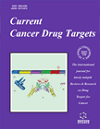
Full text loading...
We use cookies to track usage and preferences.I Understand
Because of the well-established link between angiogenesis and tumor development, the use of antiangiogenic therapeutics, such as those targeting VEGFR-2, presents a promising approach to cancer treatment. In the current study, a set of five hydrazine-1carbothioamide (compounds 3a-e) and three hydrazine-1-carboxamide derivatives (compounds 4a-c) were successfully synthesized from 3-phenoxybenzoic acid. These compounds were specially created as antiproliferative agents with the goal of targeting cancer cells by inhibiting VEGFR-2 tyrosine kinase.
The new derivatives were synthesized by conventional organic methods, and their structure was versified by IR, 1HNMR, 13CNMR, and mass spectroscopy. In silico investigation was carried out to identify the compounds’ target, molecular similarity, ADMET, and toxicity profile. The cytotoxic activity of the prepared compounds was evaluated in vitro against three human cancer cell lines (DLD1 colorectal adenocarcinoma, HeLa cervical cancer, and HepG2 hepatocellular carcinoma). The effects of the leading compound on cell cycle progression and apoptosis induction were investigated by flow cytometry, and the specific apoptotic pathway triggered by the treatment was evaluated by RT-PCR and immunoblotting. Finally, the inhibitory activities of the new compounds against VEGFR-2 was measured.
The designed derivatives exhibited comparable binding positions and interactions to the VEGFR-2 binding site to that of sorafenib (a standard VEGFR-2 tyrosine kinase inhibitor), as determined by molecular docking analysis. Compound 4b was the most cytotoxic compound, achieving the lowest IC50 against HeLa cells. Compound 4b, a strong representative of the synthesized series, induced cell cycle arrest at the G2/M phase, increased the proportion of necrotic and apoptotic HeLa cells, and activated caspase 3. The EC50 value of compound 4b against VEGFR-2 kinase activity was comparable to sorafenib’s.
Overall, the findings suggest that compound 4b has a promising future as a starting point for the development of new anticancer drugs.

Article metrics loading...

Full text loading...
References


Data & Media loading...
Supplements

